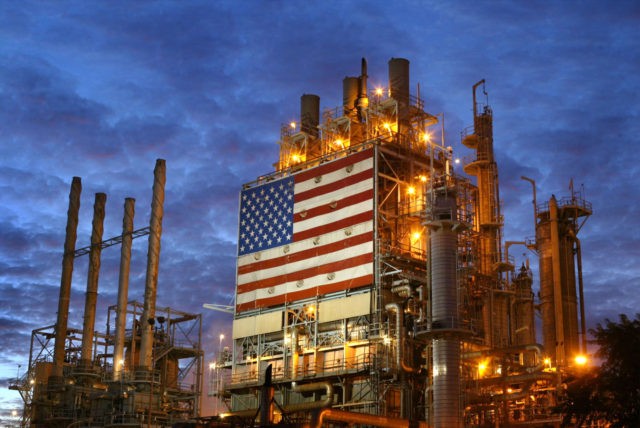Oil prices jumped higher on Tuesday, pushed up by fears of supply disruptions as fighting in Ukraine continues.
West Texas Intermediate crude, the U.S. oil benchmark, rose 11 percent to $106.78 per barrel before the International Energy Agency’s 31 member countries agreed Tuesday to release 60 million barrels of oil from their strategic reserves. WTI fell to around $103.40, eight percent above yesterday’s price level.
Brent crude, the international benchmark, traded as $107.57 before retreating to around $105.
The Associated Press reported on the reserve release:
Besides the United States, other members of the organization include Germany, France, the United Kingdom, Japan and Canada. IEA members hold emergency stockpiles of 1.5 billion barrels of oil. The release amounts to 4% of stockpiles, or roughly 2 million barrels per day for 30 days.
It’s only the fourth time in history that the IEA has done a coordinated drawdown since the reserves were established in the wake of the Arab oil embargo in 1974.
From the U.S. perspective, the price of crude oil determines a big portion of what drivers pay to fill up their cars with gasoline. The national average for a gallon of gas is $3.61, which is 26 cents more than a month ago and 90 cents more than a year ago, according to motor club federation AAA.
In 2021, the U.S. imported roughly 245 million barrels of crude oil and petroleum products from Russia — a one-year increase of 24% over 2020. Nearly 8% of U.S. imports of crude oil and petroleum products that year came from Russia, based on data from the statistical arm of the U.S. Energy Department.
In November, Biden announced a release of 50 million barrels of oil in coordination with other energy-importing countries, but the measure had only a fleeting impact on oil prices, which have continued to rise.
Stewart Glickman, an oil analyst for CFRA Research, said the latest release from the SPR would only be partially helpful, because most of the reserves are light oil, while the U.S. largely imports a heavier grade of oil from Russia.
“Refiners plan around a certain blend of crudes, so you can’t always just swap out one for another easily,” he said.
Natural gas was up by around 3 percent and heating oil futures were up 7.5 percent.

COMMENTS
Please let us know if you're having issues with commenting.